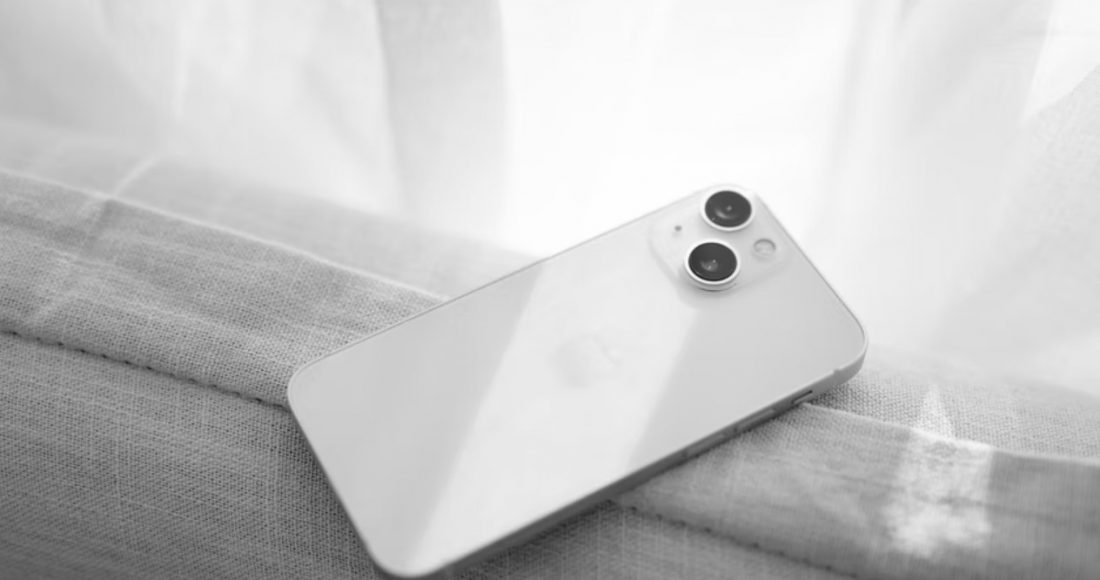Today almost all of us have a smartphone. Maybe you are reading this with your gadget. They have become an integral part of our daily lives. Let’s imagine a day without a smartphone, or traveling without it. I know, it’s beyond wildest dreams.
We are used to doing almost everything with a smartphone: from communication, entertainment, and photography to payments. Many people are guided by the capabilities of the camera when buying a new smartphone, especially travelers because they want to capture every detail of their trip, make beautiful and impressive shots, and inspire people with marvelous sightseeings. Travel photography could be a trustworthy source of income as well. If in the past it was necessary to have a heavy camera while traveling, today only one smartphone can be enough.
The first built-in camera cell phone was released in November 2000 by Sharp. It was a J-SHo4, which could take a photo at 0.11 megapixels resolution. In the 2000s, the most popular models were produced by Nokia. Do you remember Nokia N95? It had a 5MP built-in camera in it. After months, in June 2007 the original iPhone hit the market, it had a 2-megapixel camera. If in the 2000s the built-in camera for phones was a unique luxury, now it’s ubiquitous and there is a fierce struggle between different large companies to produce even more advanced versions. Let’s see our editorial selection of the top 10 smartphones for trip photographers, and what to look for when choosing one. We’ve compared the solutions available in the market and selected the best ones for you.
Apple iPhone 13 Pro Max
Apple’s latest smartphone has appeared on our top list. It was released in September this year. It received a Super Retina XDR display with a ProMotion 6.7‑inch OLED display (2778 x 1284-pixel resolution). The brightness increased by almost 30% compared to its predecessor. This means flawlessly readable images in the sun and deep blacks when watching HDR content. It is the best choice for video creators. It received a 6-core A15 Bionic with a 5-core graphics chip and 16-core Neural Engine.
It has a Pro 12MP camera system: Telephoto, Wide, and Ultra Wide. Its highlights are advanced low-light performance, detail with macro photography, and a new cinematic mode. Portrait TrueDepth Camera has a 12-megapixels (ƒ/2.2 aperture).
Camera’s Tech Specs
- 12MP Telephoto (ƒ/2.8 aperture)
- 12MP Wide camera (ƒ/1.5 aperture)
- 12MP Ultra Wide (ƒ/1.8 aperture)
- 12MP Dual Selfie camera (ƒ/2.2 aperture)
- 3x optical zoom in, 2x optical zoom out; 6x optical zoom range
- Digital zoom up to 15x
- LiDAR Scanner for Night mode portraits
- Dual optical image stabilization
- Panorama (up to 63 MP)
- 4K video recording at 24 fps, 25 fps, 30 fps, or 60 fps
- 1080p HD video recording at 25 fps, 30 fps, or 60 fps
- 720p HD video recording at 30 fps
- OIS (optical image stabilization)
- Audio zoom
Google Pixel 6 Pro
In August Google announced its new Pixel 6 and Pixel Pro Android phones. This is the best choice for Android lovers. Google kicked off its presentation with the first proprietary Tensor chip. It is an eight-core solution with a 20-core GPU, a machine learning module, and a Titan M2 hardware security coprocessor. It received Gorilla Glass Victus glass front and back. Screen: 6.7 inches, LTPO (31200 × 1440 pixels) 120 Hz. Memory: 12 GB of RAM and 128/256/512 GB storage.
Google has managed to create one of the best cameras on the market today. Based on the new Tensor chip, the camera received several useful features including:
- Magic Eraser – “magic eraser” for automatic removal of strangers and distracting elements from the frame;
- Face Unblur – a mode for capturing an object in motion, correcting blur;
- HDRnet – algorithmic video enhancement in real-time using neural networks;
- Motion Mode, which simulates panning and long exposure on a digital SLR.
Camera Tech Specs
- 50 MP Octa PD Quad Bayer wide camera (ƒ/1.85 aperture)
- 48 MP telephoto camera (ƒ/3.5 aperture)
- 12 MP ultrawide camera 11 (ƒ/2.2 aperture)
- 11.1 MP Front camera (ƒ/2.2 aperture)
- Super Res Zoom with telephoto up to 20×12
- LDAF (laser detect autofocus) sensor
- OIS (optical image stabilization) on wide and telephoto
- Fast camera launcher
Samsung Galaxy S21 Ultra 5G
On January 14, as part of the traditional Unpacked presentation, Samsung introduced the Galaxy S21 flagship line. It includes three smartphones. In our top list, we present Galaxy S21 Ultra 5G. For the first time in several years, the manufacturer has abandoned curved screens, opting for narrower bezels. The fingerprint scanner is still hidden under the screen, but now it is enlarged by 1.7 times.
It received a screen with a diagonal of 6.8 inches (3200 × 1440 pixels resolution) based on the same Dynamic AMOLED 2X matrix with a frequency of up to 120 Hz, but with brightness increased by 25% (compared to the S21 / S21 +). Gorilla Glass Victus protection is in its place as well.
The S21 Ultra has a 5,000mAh battery and supports 25W wired USB-C and 15W wireless charging. The smartphone is available in versions with 12 or 16 GB of RAM and 128/256/512 GB of storage. There is support for Wi-Fi 6E and Ultra-WideBand technology.
The cameras on the Galaxy S21 Ultra 5G are also pleasing. The main one includes four modules. This quartet is complemented by a ToF sensor and laser autofocus. Supports 12-bit HDR photography, 100x digital zoom, and new Bright Night technology, which the South Korean company calls the biggest innovation for low-light photography. This option is best for Super Zoom.
Camera Tech Specs
- 108MP main (ƒ/1.8 aperture)
- 12MP wide-angle (ƒ/2.2 aperture)
- 10MP telephoto for 3x optical zoom (ƒ/ 2.4 aperture)
- 10MP telephoto for 10x optical zoom (ƒ/ 4.9 aperture)
- 40MP selfie camera (ƒ/2.2 aperture)
- ToF sensor and laser autofocus
- 100x digital zoom
- 8K video recording at 24fps
- 4K video recording at 30/60fps
- 1080p video recording at 30/60/240fps
- 720p video recording at 960fps
- HDR10+
- OIS
OnePlus 9 Pro
In March, OnePlus launched two new flagship smartphones – OnePlus 9 and OnePlus 9 Pro. Both new smartphones are equipped with top-end cameras, developed in collaboration with the Swedish manufacturer of photographic equipment Hasselblad.
OnePlus 9 Pro received a slightly curved 6.7-inch LTPO OLED display with HDR10 + support. The resolution is QHD + (3216 × 1440 pixels), and the peak brightness reaches 1300 nits. According to the manufacturer, this display is 50% more energy efficient than comparable matrices from competitors. The screen is protected by Gorilla Glass Victus.
Via this smartphone, you can make impressive wide-angle shots. It has 4 cameras and one front camera. The main camera includes Sony IMX789 (main sensor) and Sony IMX766 (wide-angle) sensors with a resolution of 48MP and 50MP, relatively, as well as FreeForm lenses to effectively compensate for geometrical distortions of the picture. The third 8-megapixel module is used for 3x optical zoom, and the fourth sensor is monochrome. There is support for 4K video at 120fps and 8K video at 30fps. The front camera has a resolution of 16 megapixels.
Camera Tech Specs
- Main Camera: Sensor: Sony IMX789; 48MP (ƒ/1.8 aperture)
- Ultra-Wide Camera: Sensor: Sony IMX766; 50MP (ƒ/2.2 aperture)
- Telephoto Camera: 8MP (ƒ/2.4 aperture)
- Monochrome Camera: 2MP (Flash Dual LED Flash; Multi Autofocus)
- Front Camera: Sensor: Sony IMX471; 16MP (ƒ/2.4 aperture)
- 8K video at 30 fps
- 4K video at 30/60/120 fps
- 1080p video at 30/60 fps
- 1080p video at 240 fps, 720p video at 480 fps (Super Slow Motion)
- 1080p at 30 fps, 4K at 30 fps (Time-Lapse)
- OIS (optical image stabilization)
Xiaomi Mi 11 Ultra
Xiaomi in March introduced the flagship Mi 11 Pro and Mi 11 Ultra with a display built into the camera. They charge from 0 to 100% in 36 minutes. They differ from the regular Mi 11 not only in design but also in improved capacity and cameras. The smartphone is equipped with the Snapdragon 888 processor with the latest cooling system, thanks to which it will show better performance than other flagships with the same chip. Its 6.81-inch curved S-AMOLED display features 2K resolution, 120Hz refresh rate, and Gorilla Glass Victus protection. It also supports Dolby Vision technology. Storage and RAM: 12GB+256GB.
Mi 11 Ultra allows you to capture an image on 2 cameras simultaneously (for example, on the main and front or main and wide-angle) and display a preview in 6 versions at once (for example, from four cameras + two options with different degrees of zoom). For mobile videographers, there is the possibility of filming with two Mi 11 Ultra united.
The camera module has become so wide not only for the sake of symmetry: in addition to optics and a flash, it also houses a display that shows the time and notifications – a kind of mini AlwaysOn. This display can also be used as a preview window for taking selfies with the main camera.
Camera Tech Specs
- 50MP wide-angle camera (ƒ/1.95 aperture)
- 48MP ultra-wide angle camera (ƒ/2.2 aperture)
- 48MP telephoto camera (ƒ/4.1 aperture)
- 20MP front camera (ƒ/2.2 aperture)
- 5x optical zoom
- 120x digital zoom; 10x hybrid zoom
- 8K video: 24 fps, supports HDR 10;
- 4K video: 60fps / 30fps, supports HDR 10+
- 1080P video: 60fps / 30fps,
- Slow motion shooting: 120fps / 240fps / 480fps / 960fps / 1920fps
- Selfie Night mode
- LDAF (laser detect auto focus)
- OIS
Google Pixel 6
Google’s another gadget is also on our top list, Pixel 6 is the best mid-range camera smartphone. It has a good battery life, which plays a major role while traveling. It is powered by its own Tensor processor, which Google has been working on for 4 years. It will speed up the processing of machine learning tasks, for example, improve photo and video processing, as well as create “the best voice recognition system on Pixel smartphones.”
The Pixel 6 has a 6.4-inch FHD + screen (up to 90 Hz).
By the way, the Pixel 6 is as big as the iPhone 13 Pro Max. It has a similar camera bar to Google Pixel 6 Pro. This one is perfect for wide-angle shots.
Camera Tech Specs
- 50 MP Octa PD Quad Bayer wide camera (ƒ/1.85 aperture)
- 12 MP ultrawide camera (ƒ/2.2 aperture)
- 8 MP Front Camera (ƒ/2.0 aperture)
- 4K video recording at 30 FPS, 60 FPS
- 1080p video recording at 30 FPS, 60 FPS
- Cinematic Pan
- Slo-mo video support up to 240 FPS
- 4K Timelapse with stabilization
- LDAF (laser detect auto focus) sensor
- OIS
- Fast camera launcher
Apple iPhone 13 mini
The iPhone 13 mini has a new OLED display with up to 800 nits peak brightness and support for HDR10, Dolby Vision, and HLG. The size of the screen 5.4՛՛. Its size is convenient to control it by one hand and to make shooting.
Inside, it has a new A15 chip, which is 50% faster than competitors in CPU and 30% faster in graphics. It is complemented by an Image Signal Processor (ISP) and a 16-core Neural Engine. iPhone 13 mini is powerful though it may seem like a small smartphone. It is also the cheaper one in Apple’s new flagship series. It received a Dual 12MP camera system: Wide and Ultra Wide cameras.
Camera Tech Specs
- 12MP Wide (ƒ/1.6 aperture)
- 12MP Ultra Wide (ƒ/2.4 aperture)
- 12MP TrueDepth Camera (ƒ/2.2 aperture)
- 2x optical zoom out
- Digital zoom up to 5x
- Panorama (up to 63MP)
- 4K video recording at 24 fps, 25 fps, 30 fps, or 60 fps
- 1080p HD video recording at 25 fps, 30 fps, or 60 fps
- 720p HD video recording at 30 fps
- Slo‑mo video support for 1080p at 120 fps or 240 fps
- Time‑lapse video with stabilization
Samsung Galaxy Note 20 Ultra 5G
Unlike most competitors in the premium segment of the smartphone market, Samsung continues to clearly divide hi-end gadgets into two flagship lines. The Galaxy Note 20 Ultra is the latest in the Galaxy Note line of smartphones – Samsung is shutting down the production of phones under this brand. It has notable tech specs. It received a Dynamic AMOLED 2X screen with a refresh rate of 120 Hz. Samsung also updated the S Pen and added five new gestures, such as swiping to return to the home screen or take a screenshot.
Camera Tech Specs
- 10MP Selfie Camera (ƒ/2.2 aperture)
- 12MP Ultra Wide Camera (ƒ/2.2 aperture)
- 108MP Wide-angle Camera (ƒ/1.8 aperture)
- 12MP Telephoto Camera (ƒ/3.0 aperture)
- Laser AF Sensor
- 5x Optical Zoom
- 1080p FHD video recording at 120 and 60 fps (1920×1080)
- 720p HD video recording at 30 fps (1280×720)
- Slow-motion 1080p video support at 240 fps
- Hyperlapse 1080p video support
- OIS
Huawei P40 Pro
Every new generation of Huawei smartphones is accompanied by loud slogans about outstanding design and amazing performance, but most of all the company praises the cameras. In P40 Pro, photo and video quality are again at the forefront.
Huawei P40 Pro received a 6.58-inch screen with a refresh rate of 90 Hz. It has an OLED display (2640 × 1200 pixels). The battery capacity of the Huawei P40 Pro is 4,200 mAh. Not the most impressive one, but the engineers worked on the optimization.
The only frustrating thing is the absence of Google services. However, the model costs less than the competitors.
Huawei P40 Pro’s camera does not seek to twist the colors and sharpness, the bet is made on preserving the mid-tones and clean details. Huawei’s refusal from aggressive compression is also encouraging: the average size of JPG-files at 12.5 megapixels is 5-6 MB.
Camera Tech Specs
- 50 MP Ultra Vision Camera (ƒ/1.9 aperture)
- 12 MP Telephoto Camera (ƒ/3.4 aperture)
- 40 MP Ultra Wide Cine Camera (ƒ/1.8 aperture)
- 32 MP front camera (ƒ/2.2 aperture)
- 3D Depth Sensing Camera
- RYYB color filter array, Octa PD Autofocus
- 5x Optical Zoom, 10x Hybrid Zoom, 50x Max Zoom,
- 1080p video recording at 30/60 fps,
- 720p video recording at 7680 fps,
- 1080p video recording at 960 fps,
- HDR
Sony Xperia 5 II
Sony Xperia 5 II is a catchy Android smartphone, which has a 6.1-inch display with a 21: 9 aspect ratio, OLED display with FHD + resolution, and HDR support.
Sony Xperia 5 II received a Qualcomm Snapdragon 865 processor. The Sony Xperia 5 II has a 4000 mAh battery with fast charging function. Also on board is 8 GB of RAM and 128 GB of internal storage, which are not record-breaking, but quite sufficient for a flagship.
Sony Xperia 5 II camera consists of three 12 megapixel modules. Night shots by this gadget are absolutely delightful: detailed, full-color, even in poor or difficult lighting, they will clearly catch photography enthusiasts.
The main camera takes high-quality portraits. But the front camera is the model’s weak point: against the background of the rest, the selfies come out completely inexpressive.
Especially noteworthy is Photo Pro mode, which repeats the interface of Sony professional cameras. You can attentively tweak the settings and achieve really cool shots. This one is a good choice for setting-tweakers.
Camera Tech Specs
- 12MP Rear Camera 1 (ƒ/1.7 aperture)
- 12MP Rear Camera 2 (ƒ/2.4 aperture)
- 12MP Rear Camera 3 (ƒ/2.2 aperture)
- ZEISS® quality lenses calibrated specifically for Xperia 5 II
- Optical zoom 3x
- 3x Digital zoom
- Cinematography Pro “powered by CineAlta”
- 4K HDR Movie recording 24/25/30/60
- 120fps slow-motion13
- HDR
- OIS
Huawei Mate 40 Pro
This is a top-end device in a completely new design, which has an unusual photo module called “Space ring”. It got a 6.76-inch OLED screen with a resolution of 2772 × 1344 pixels, a frequency of 90 Hz, and also support for HDR10 and HLG. The heart of the gadget is the Huawei Kirin 9000 5G processor. It is complemented by a Mali-G78 MP2 graphics booster and a 5G modem, 8 GB RAM, and 128 to 512 GB storage. Battery: 4 400 mAh.
Featuring Wi-Fi 6 and 5G connectivity, a powerful processor and storage, this flagship device also delivers significant photo and video capabilities. DxOMark has already ranked the Mate 40 Pro first in the camera ratings (main + selfie).
The smartphone has Leica optics, new algorithms based on AI, and also supports 8K and HDR recording. The front camera deserves special praise: it shoots at a speed of up to 240 frames per second, can automatically switch to a wide-angle mode, and records video simultaneously with the main one.
Camera Tech Specs
- 50 MP wide camera (f/1.9 aperture)
- 20 MP ultrawide camera (f/1.8 aperture)
- 12 MP periscope telephoto (f/3.4 aperture)
- 13 MP dual selfie camera (f/2.4 aperture)
- 5x optical zoom
- 4K video recording at 30/60fps
- 1080p video recording at 30/60/120/240/480fps
- 720p video recording at 960fps
- Panorama
- HDR
- PDAF
- OIS
***
Now every flagship model of almost every brand is trying to attract attention with the most complex and engaging camera implementation. The tech specs of the devices are masked by loud words, bold slogans, huge numbers, and their own names of technologies. But, is it possible to subtract anything useful from them and understand whether that camera is capable of producing a decent image?
Just looking at the sheer number of cameras is wrong, they are characterized by different criteria as you can see. The choice is great, there are many offers, but finding the best one is not as easy as it may seem. We chose for you the best ones. Any smartphone can’t be the best in all modes, so when choosing, you should pay attention to what is important specifically to you.








